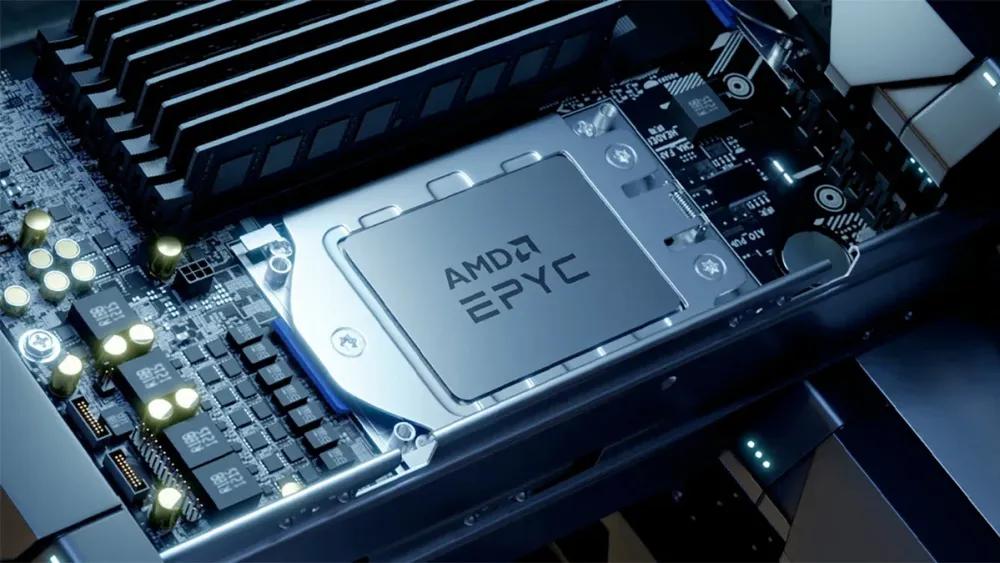AMD's Sixth-Gen EPYC Processor "Venice" Completes Tape-Out
The high-performance computing (HPC) market is set for significant transformation in 2026. AMD recently announced the tape-out of its sixth-generation EPYC server processor, codenamed "Venice," marking it as the first HPC-dedicated CPU designed using TSMC's N2 (2nm) process technology. This milestone not only highlights AMD's aggressive technical roadmap in the data center processor space but also signifies a critical step toward advanced process technology at the 2nm node.
N2 Process and Architecture Upgrades
The "Venice" processor is based on the Zen 6 architecture and leverages TSMC's latest N2 process technology. TSMC's N2 process is the first to adopt Gate-All-Around (GAA) nanosheet transistors. Compared to the previous N3 (3nm) process, it offers a power consumption reduction of 24% to 35% at constant voltage, a performance improvement of approximately 15%, and a 1.15x increase in transistor density. These advancements are expected to deliver significant performance benefits for Venice in areas such as cloud services, AI training, and edge computing.
AMD EPYC Product Roadmap
AMD's EPYC series has maintained a steady pace of technical iteration in recent years:
● 2022: Fourth-generation EPYC "Genoa" (Zen 4, 5nm)
● 2024: Fifth-generation (Zen 5, 3nm)
● 2026: Sixth-generation EPYC "Venice" (Zen 6, 2nm)
The tape-out timeline for "Venice" (expected to enter validation testing in 2025) aligns closely with TSMC's N2 mass production plans (risk production at the end of 2025, full-scale production in 2026), underscoring the deep collaboration between AMD and TSMC in advanced process technology.
Industry Impact: Intensifying HPC Market Competition
1. Process Node Leadership
Intel plans to launch its Clearwater Forest processor using Intel 18A (equivalent to 1.8nm) in 2025. However, AMD's early tape-out of Venice using TSMC's N2 process may grant it a 12- to 18-month lead in process nodes.
2. Positioning in the HPC Market
With surging demand for computational power in scenarios like AI large-model training and climate simulation, the HPC processor market is projected to surpass $30 billion by 2026. AMD, leveraging Venice, is poised to expand its leadership in supercomputing (currently accounting for over 30% of TOP500 supercomputers) while differentiating itself from accelerated computing solutions like NVIDIA Grace Hopper.
3. Supply Chain Strategy Deepening
AMD continues to rely on TSMC's advanced nodes (all EPYC series use TSMC's 5nm/3nm/2nm processes), while Intel accelerates its IDM 2.0 strategy. The competition between these two approaches could reshape the semiconductor supply chain landscape.
Market Significance of Venice's Tape-Out
AMD Chairman and CEO Lisa Su emphasized that TSMC has been a critical partner in realizing AMD's technical vision. Through close collaboration, AMD continues to deliver leading products that push the boundaries of high-performance computing. TSMC Chairman and President C.C. Wei noted that the partnership with AMD has driven significant technological expansion, delivering superior performance, power efficiency, and yield for high-performance chips.
Additionally, AMD announced that its fifth-generation EPYC processor has been validated and is now in production at TSMC's Arizona Fab 21, further solidifying supply chain resilience. This marks an important step in AMD's domestic production strategy and enhances its influence in the U.S. market.
Conclusion
The tape-out of the Venice processor underscores AMD's aggressive product roadmap and reflects TSMC's readiness in production nodes, backed by strong technical capabilities and manufacturing capacity. This collaborative achievement injects momentum into the future of computing and positions AMD for a competitive edge in the market.

Conevo ic Supplier - Popular semiconductor Models
Conevo Electronics specializes in cost-effective IC solutions, providing fast and precise semiconductor options for your projects. Explore the latest hot chip models to enhance your project efficiency.
● The MPS's MPQ8626GD-Z is a high-efficiency 6A synchronous step-down DC-DC converter with a 4.5V to 18V input range, featuring a 600kHz switching frequency, integrated MOSFETs, and comprehensive protection (over-current, thermal shutdown) in a compact QFN-16 package for industrial and automotive applications.
● The UMW AMS1117CD-3.3 is a 1A low-dropout (LDO) linear voltage regulator with a fixed 3.3V output, supporting an input voltage range of 4.75V to 15V, featuring ±2% output accuracy, over-current/thermal protection, and packaged in a compact SOT-223 for applications in consumer electronics, IoT devices, and embedded systems.
● The Texas Instruments SN74LS08N is a quad 2-input AND gate IC operating at 4.75V to 5.25V, utilizing TTL logic with low-power Schottky (LS) technology, packaged in a 14-pin PDIP for general-purpose digital logic applications in industrial, computing, and control systems.
Website: www.conevoelec.com
Email: info@conevoelec.com








